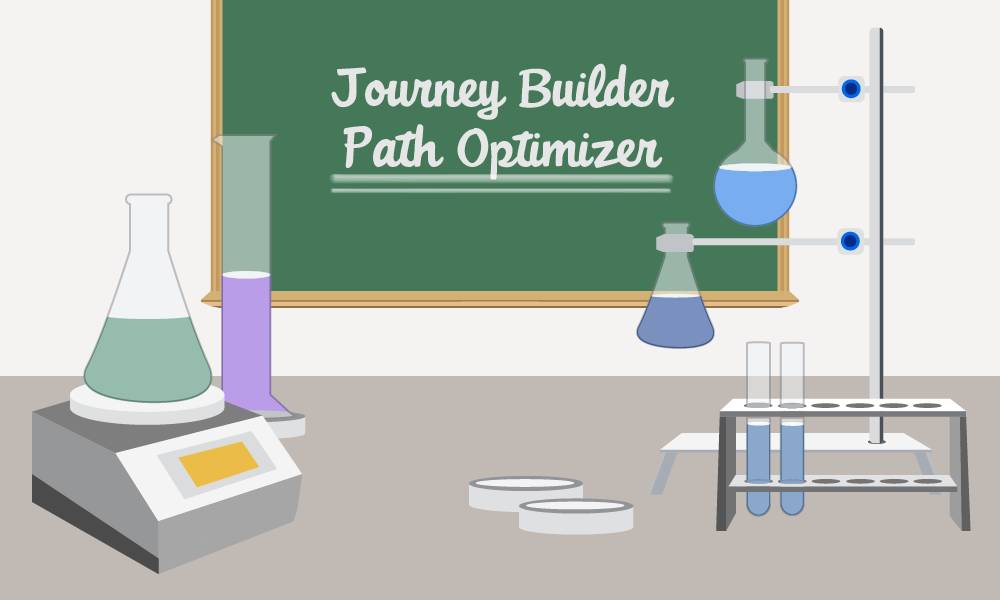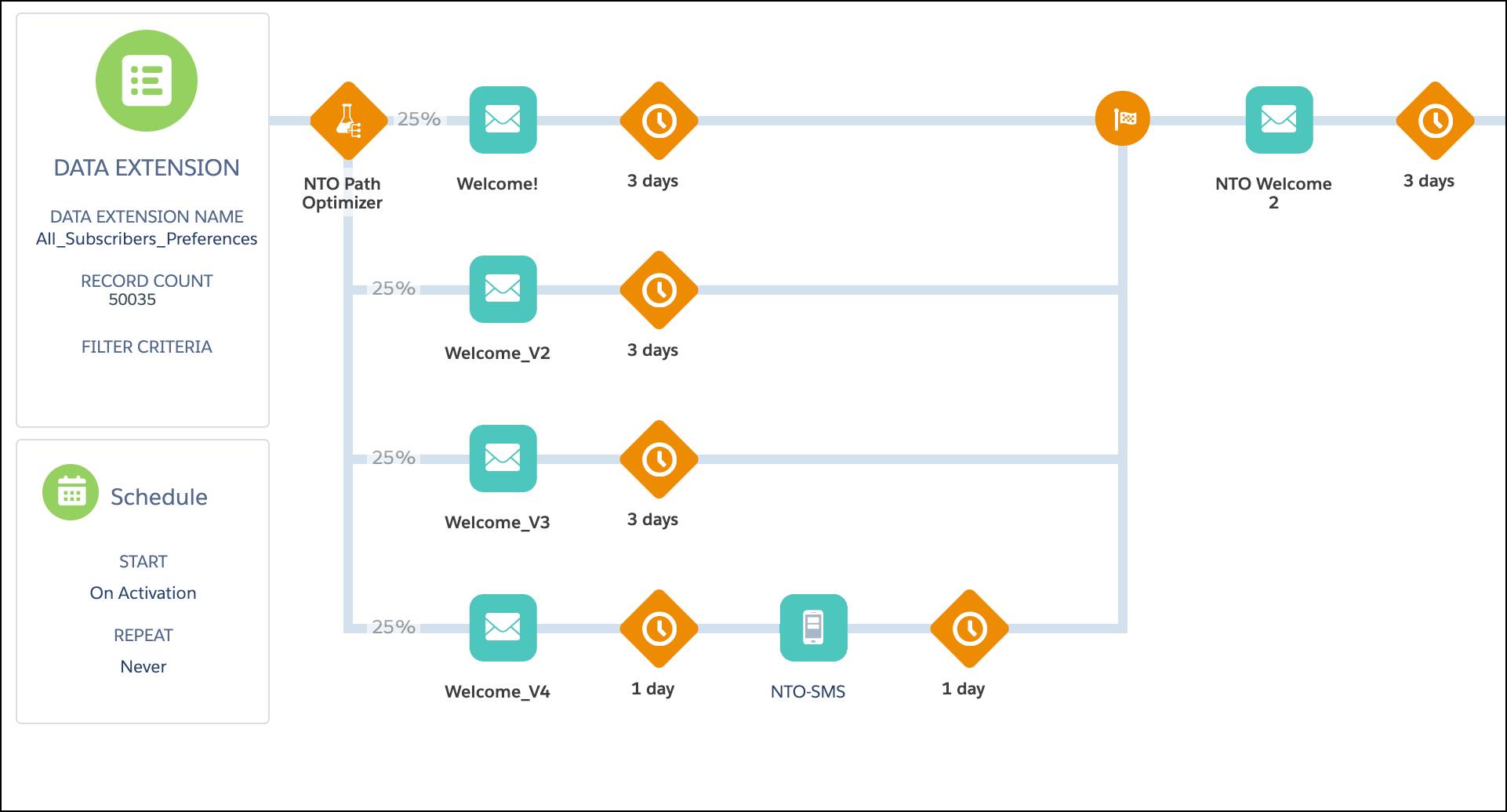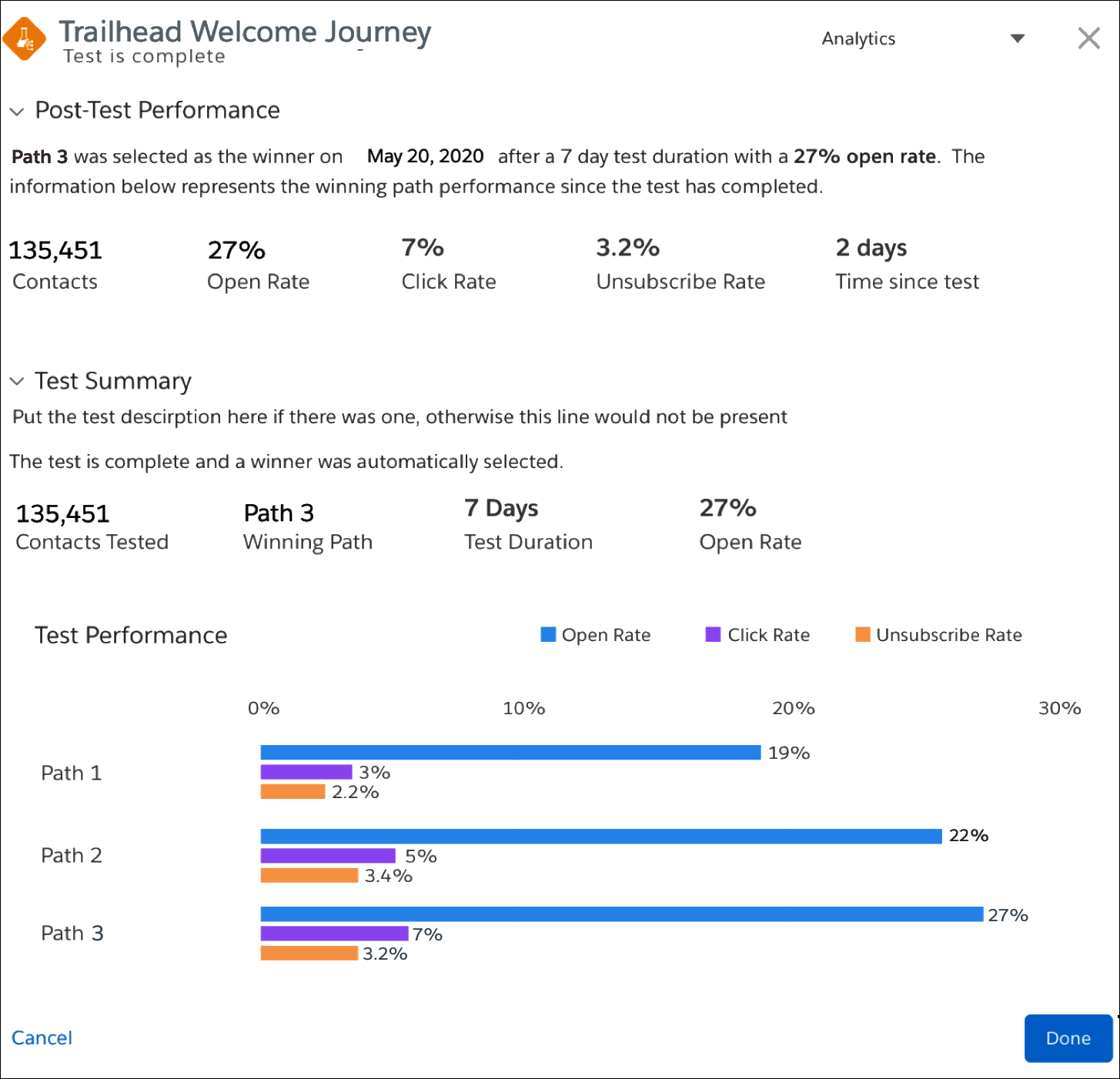Experiment with Your Customer Journeys
Learning Objectives
After completing this unit, you’ll be able to:
- Describe how to use Path Optimizer in Journey Builder.
- Consider ways to test and improve your journeys.
- Identify Path Optimizer use cases.
Journey Builder Experimentation
Famous scientist, Marie Curie, became the first woman to win a Nobel Prize for her research on radioactivity. She developed a theory and went on to prove the existence of radiation through numerous studies. All scientists, including Marie, learn about our world by developing a hypothesis and then confirming that hypothesis through research and experimentation.
Digital marketers are no different. You have a hunch that turns into a hypothesis, and then you look for ways to test it. But—like a scientist—to test your hypothesis, you need the right tools. No, we don’t mean microscopes and test tubes. We’re talking about Path Optimizer in Journey Builder—a tool that gives you the ability to test various journey paths to meet your campaign goals. So channel your inner scientist, and get ready to explore this new tool as you experiment with your customer journeys like never before.

Introducing Path Optimizer
Path Optimizer goes beyond A/B testing (which uses two variables)—giving you the ability to test up to 10 paths in Journey Builder. What’s a path? It’s simply one sequence of events in a journey. Let’s take a look at what this looks like in Journey Builder.

In this welcome journey example, a marketer wants to test four different welcome emails. Each of these welcome emails is a different path within the same journey. One of the four paths also includes an SMS notification one day after the email. Now, with Path Optimizer, the marketer can test all four paths simultaneously. Let’s see what the results look like.

After the 7-day test, a winner has been chosen. Path 3 (a welcome email variation with no follow-up SMS) was automatically chosen as the winner after receiving the highest open rate. In just 7 days, the marketer gained insights that would’ve taken weeks to gather.
Testing 1-2-3
Path variations can be minor (like a subject line) or major (like a different channel type). To help you think through potential journey paths, let’s review some testing ideas.
| Type of Test | Testing Suggestions |
|---|---|
| Subject Line and Preheader |
|
| Personalization |
|
| Content |
|
| Wait Time |
|
| Send Time |
|
| Channel |
|
Industry Use Cases
Path Optimizer gives you the flexibility to determine a winner automatically based on a specific engagement metric or manually based on your own criteria. This is best illustrated through real-life examples. From nonprofit to consumer goods, here’s how Path Optimizer can be used in a variety of industry use cases.
Nonprofit
A large, nonprofit animal shelter decides to use Path Optimizer to test three paths for an end-of-year email campaign. The shelter debated whether to highlight a story about a successful adoption (path 1), show its cutest animals (path 2), or feature a story about the oldest animal in need of adoption (path 3). To solve the debate, the shelter’s email marketer uses Journey Builder to test which email engages the most donors and leads to the most donations. After 3 days of testing these email versions, the marketer analyzes the Path Optimizer open rates for each path as well as the donation amounts in the shelter’s donor database. While path 2 had the most email opens, the testing showed that path 3 led to the most donations. The marketer selects path 3 as the winner to be sent to the remaining audience (also known as a holdback audience—we cover this more in the next unit).
Insurance
An insurance company wants to test whether a customer is more likely to renew if they receive a phone call from an agent in addition to receiving a renewal email. Before making this a requirement for the agent, the marketing team decides to test with Path Optimizer. One path uses the existing email path and the second path includes a Salesforce Task activity for the agent to call a day after the email is sent. Since the insurance agents use Salesforce to manage their daily activities, the task activity creates a task in Sales Cloud for them to call the customer. After a month of testing this process, the marketing team is happy that their hypothesis is correct—calls are effective. The marketer heads back into Journey Builder and selects the second path as the winner moving forward.
Consumer Goods
A marketing executive at a consumer goods conglomerate wants to test the potential return on investment (ROI) for machine learning via Einstein. She asks her marketing team to test the Einstein Send Time Optimization activity on one path and a fixed duration wait on another path to see which timing drives more email opens. The winning path is selected automatically based on which receives the highest email opens. After the test is complete, the machine learning path does receive the highest email opens. The team now confidently add the Send Time Optimization activity to all their email sends moving forward.
Finance
A bank has an existing journey created for its new mortgage applicants that spans a period of several months. Instead of just testing one aspect of its journey, the bank’s marketing manager decides to test three different aspects of its journey in order to increase engagement and conversion of applicants to loan customers. The bank has three tests planned for its loan journey.
- Test One: The bank set up a 3-path test for its first email to determine which email subject line variation drives the highest numbers of clicks on the “learn more” link.
- Test Two: For the second email, sent a few weeks later, the team includes another Path Optimizer test that breaks the audience into three paths, testing both wait cadence and message content blocks for the highest open rate.
- Test Three: The final Path Optimizer test divides the journey into two paths, with one path adding in an SMS message reminder before applicants receive a final mortgage approval email with the CTA of “Finalize Your Loan.” The winner of this final test is manually selected based on which path results in the most loan approvals.
The bank’s email marketer is pleased with the results. Even after just 6 months of adding the various testing methods, the bank has seen a 2% increase in loan approvals.
Try Stuff
Experimentation and trying new things is the key to success in most aspects of life, from science to art to marketing. So don’t be afraid to try a bunch of stuff! In the next unit, we get ready to test by adding the Path Optimizer activity to your journeys.
